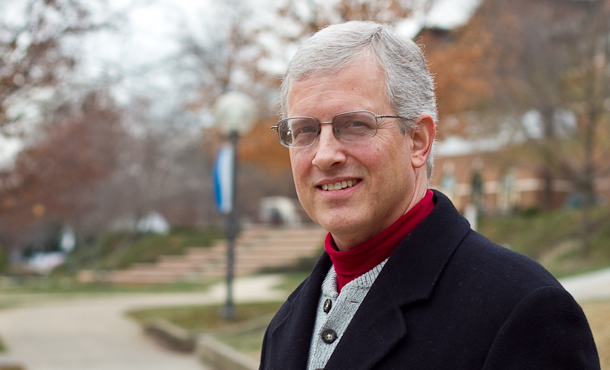Randall L. (Randy) Longenecker, M.D., of Bellefontaine, Ohio, leans forward, his pulse and his voice quickening as he talks about an issue close to his heart: providing top-notch medical care to America’s rural population.
Dr. Longenecker, a 1975 EMU graduate, has a long-standing passion to encourage recent medical school graduates to focus their energies on underserved areas of the country, an effort he has worked with for some 17 years.
Longenecker is clinical professor of family medicine and assistant dean for rural medical education at the Ohio State University College of Medicine and rural program director of the Ohio State Family Medicine Rural Residency Program.
He is a member of the medical staff at Mary Rutan Hospital in Bellefontaine that includes fellow EMU alumni Roger Kauffman (’73), Winfred Stoltzfus (’80), Rodney Graber (’87), Charles Kratz (’88) and Ryan Kauffman (’99).
Longenecker manages grant initiative aimed at producing more rural doctors
His efforts received a major boost recently when Dr. Longenecker was appointed project manager for a $1 million federal grant, an initiative intended to both encourage and to train doctors to practice medicine in rural areas of the nation.
The money is awarded by the Office of Rural Health Policy a year at a time, spread over a three-year period.
“I didn’t define myself at first as a ‘rural’ doctor, but my work in this geographic area of western Ohio, my travel around the country and meetings with other impassioned rural medical educators spurred my desire to get involved in this medical education initiative,” Longenecker said.
Community-based training program, similar to apprenticeship
“I’m most intrigued with the challenge of developing a critically reflective, apprenticeship style of rural education,” he said. “The small community-based training program we work with allows for a lot of flexibility and innovation.”
Longenecker admits that “it’s not easy to persuade someone right out of med school to consider practicing in rural areas, knowing some of the challenges. The benefits are measured in intangible, not necessarily economic ways.”
Candidates enter the program right out of medical school, Longenecker explained. Over a three-year period they receive five months of urban and 31 months of rural learning, moving between the Bellefontaine area and urban sites in Columbus, Ohio.
“This program is especially effective in helping doctors learn the context in which they will be practicing,” he noted. “Seventy-five percent of the 15 graduate of this program have gone on to practices as rural or more rural than my own.”
Memories of Suter Science Center

The Suter Science Center is named for Dr. Daniel Suter, who joined the science department at EMU in 1948 and eventually became head of the biology department and pre-med advisor. He retired in 1985. During his tenure, EMU established a remarkable acceptance rate for its pre-med students: more than 85 percent were and are admitted into medical, dental and veterinary schools, well above the national average of 40 to 50 percent. That outstanding placement rate continues to this day.
When Longenecker enrolled as a student at EMU in 1970, the Suter Science Center, now more than 40 years old, was a brand-new facility.
“I remember that visiting campus and seeing the science center provided an image that made me want to attend here,” he said.
“My experience [at EMU] promoted an integration of life and practice that prepared me well for what I’m doing today.”
Learn more about the Campaign for the Suter Science Complex, focused on updating the science facilities for a new generation of science professionals in academic programs like the following:
- Nursing
- Chemistry
- Pre-Professional Health Sciences
- Mathematics, Computer Science, and Pre-Engineering
- Biology, Laboratory Sciences, and Environmental Sciences
A family of EMU graduates
Longenecker is married to fellow EMU alum Marla Hochstetler (’75) Longenecker from Oxford, Iowa.
They have three children, two of whom are EMU graduates: Chris (’01); Angie (’02), married to Ryan Strite (’99); and Katie.
